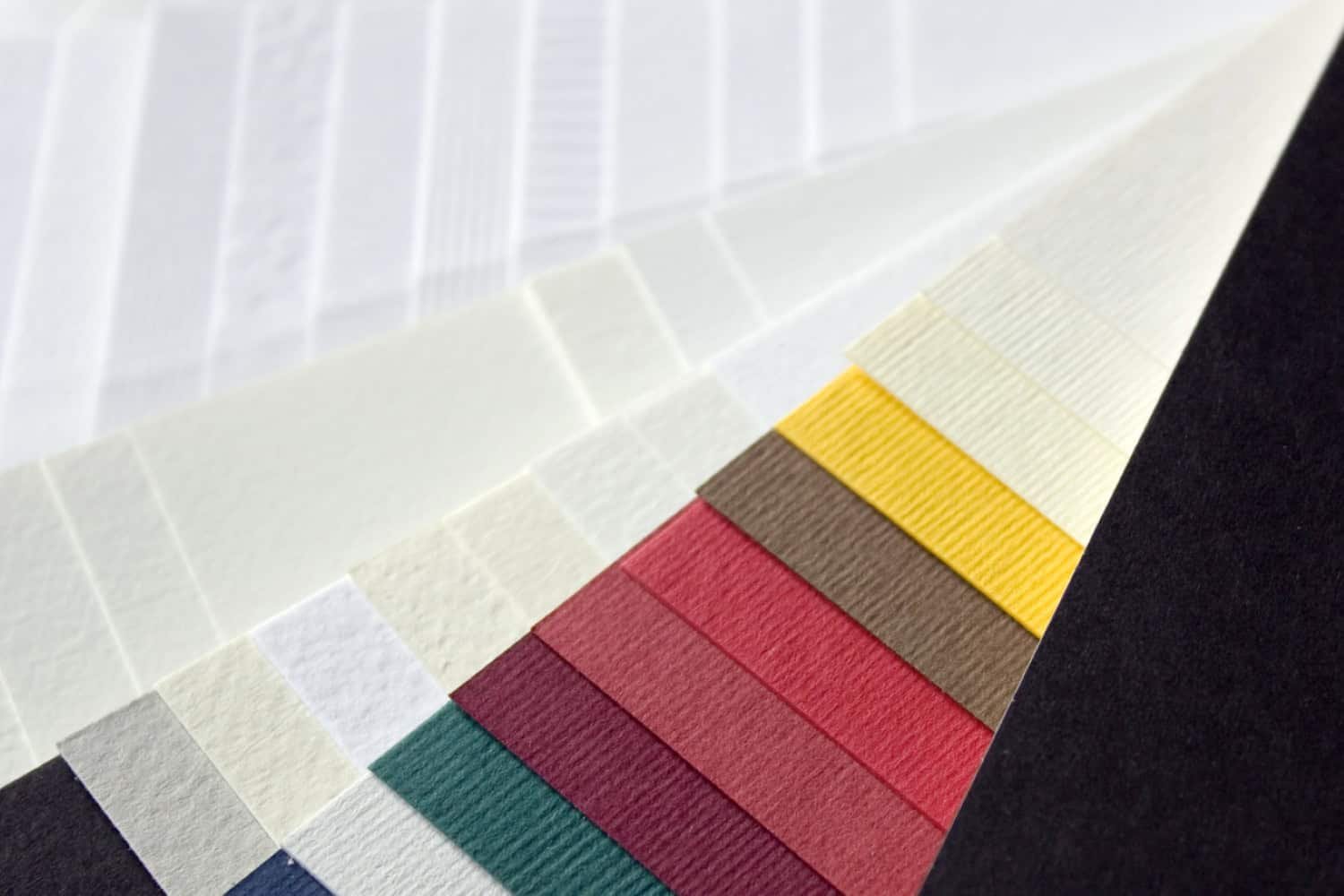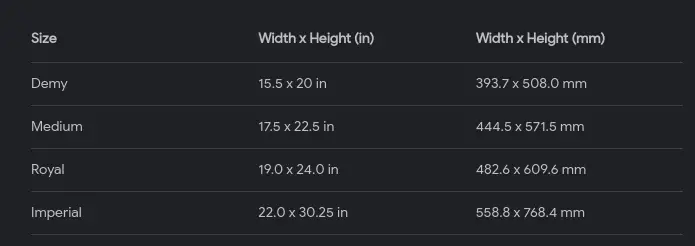Table of Contents
English Uncut Printing, Book & Drawing Paper Sizes
When there was no International Committee formation and there were no standardized size formats, people were had no idea of sizes. At that point in time, ISO 2016 had no existence around the globe. Several countries of British origin like England, the British Isles and the Commonwealth countries of British origin used a variety of paper sizes without any standard. These paper sizes had many strange names like Demy, Double Pott, and the Columbier. Since these paper sizes were being used a long time back. Therefore, many of the sizes have almost been forgotten. However, you can obtain them in today’s date with the assistance of some specialist manufacturers. Here, we are providing a table that will list the sizes ending in inches and mm along with their aspect ratios.
See Also: The History Of Papyrus
Uncut Book & Drawing Paper Sizes
Now, the table gives the sizes in inches and mm of old English uncut book and drawing paper sizes. You can check both the sizes together along with their aspect ratio.
[table id=61 /]Proper & Actual Uncut Printing Paper Sizes
Here are the following sizes in inches and mm of old English uncut printing paper sizes. You can check the respective sizes along with their aspect ratio.
[table id=62 /]You can also check the following articles for Modern international uncut paper sizes like RA1, RA2, SRA1, SRA2, and US uncut paper sizes.
FAQ’s
Where did the different paper sizes come from?
The first mention of conventional paper sizes was in a letter addressed by physics professor Georg Christoph Lichtenberg to his friend Johann Beckmann in October 1786. Lichtenberg explained the advantages of a height-to-width ratio of the square root of 2.
Why do paper sizes vary?
What is the name of the most common paper size?
The most popular traditional size formats are Letter (8.5 11 inches), Legal (8.5 14 inches), and Tabloid (11 17 inches). You almost certainly utilize these formats in your daily life. Letters are commonly used in commercial and academic publications.
Is paper size important for printing?
Because your printer can only take a limited range of paper sizes, checking sure your printer can fit your paper size is necessary if you intend to print with your printer. Because not all paper kinds are available in the same range of sizes, it is important to understand your alternatives to set reasonable expectations.
What do you call old paper?
The term parchment refers to any animal skin that has been prepared for writing or printing. Parchment has been used for ages and is manufactured from calf, goat, or sheep skin. Vellum, derived from the French veau, refers to parchment manufactured from cow skin. The production of parchment is a complex process.
What kind of paper is most commonly used?
Regular matte paper is the most popular type of paper used to print documents and will suit the majority of basic print tasks.
Which paper size should I use?
The most popular traditional size formats are Letter (8.5 11 inches), Legal (8.5 14 inches), and Tabloid (11 17 inches). You almost certainly utilize these formats in your daily life. Letters are commonly used in commercial and academic publications.
Can one alter the qualities of paper?
Paper chemicals are a class of chemicals used in producing paper or altering the properties of paper. These compounds can be in use to change the color and brightness of the paper and increase its strength and resistance to water.
Which countries make use of letter-sized paper?
ANSI or letter format The American National Standards Institute defines a letter as a paper size standard commonly used as home. Or office stationery in the United States, Canada, Chile, Colombia, Costa Rica, Mexico, Panama, Guatemala, the Dominican Republic, and the Philippines.






